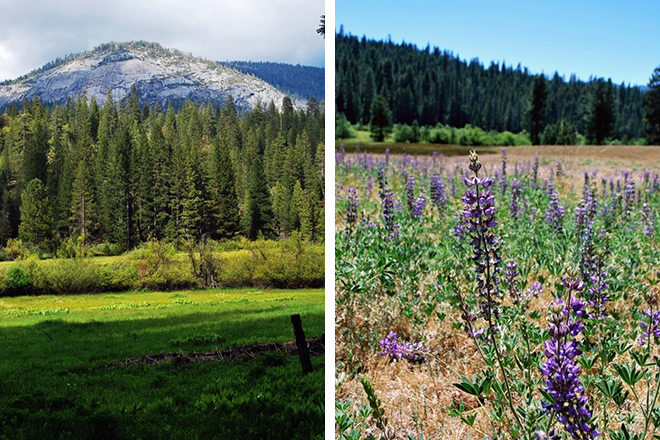
Lupine (right) are currently blooming in Wawona Meadow
Today, after a major restoration effort, the Wawona meadow is much healthier than it used to be. Ditches have been filled in, cattle are nowhere to be found, and the airstrip is long gone. Right now, the meadow is verdant with early summer grasses, and wildflowers such as lupine and clarkia are in bloom. Despite its beauty and current appearance of health, the meadow faces yet another threat: climate change. Sierra Nevada meadows depend on snowmelt to keep them wet or moist throughout the year. Yosemite is predicted to see a significant reduction in the snowpack by the end of the century, which will likely have a serious drying effect on our meadows.
As you enjoy the results of the recent restoration efforts to the Wawona Meadow, think about the actions that you can take to help protect this beautiful spot from climate change.
